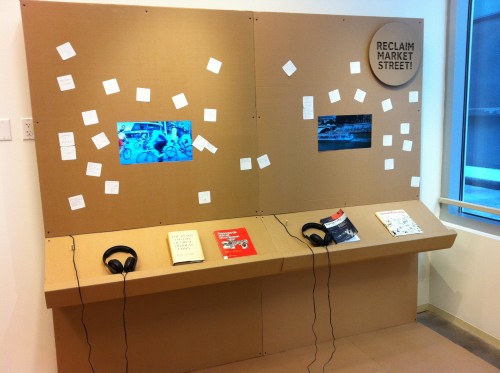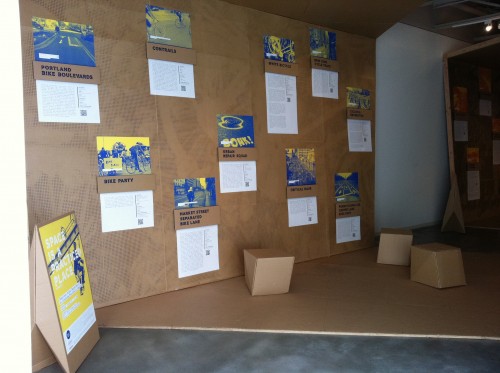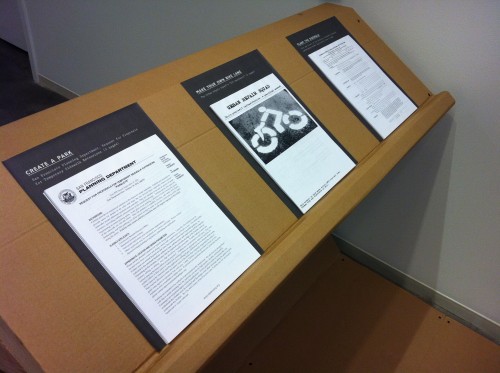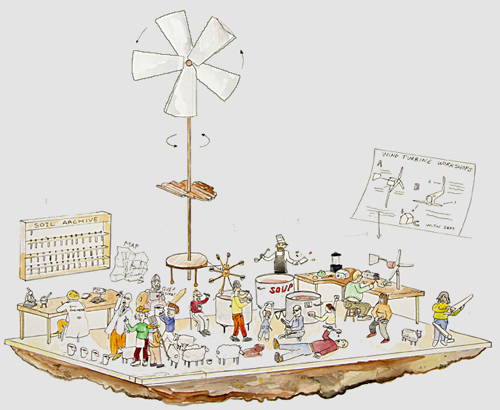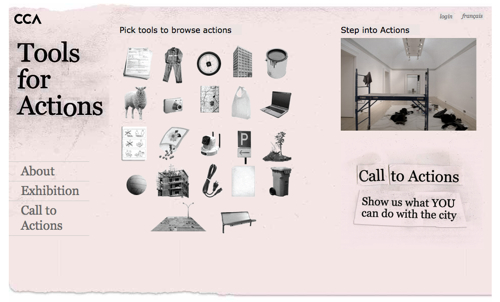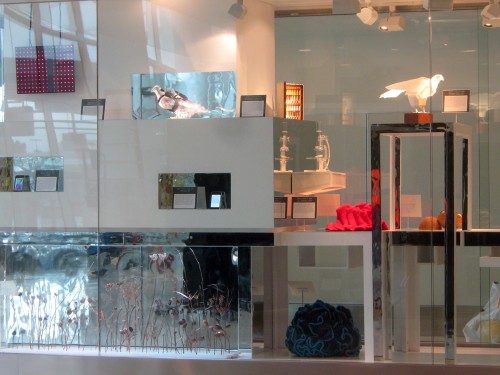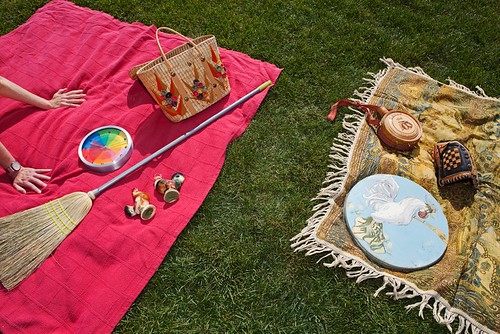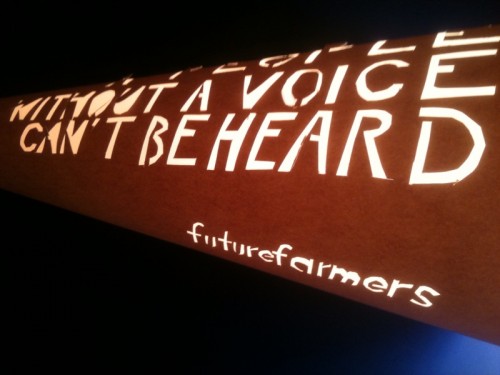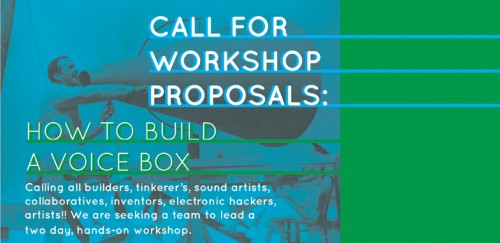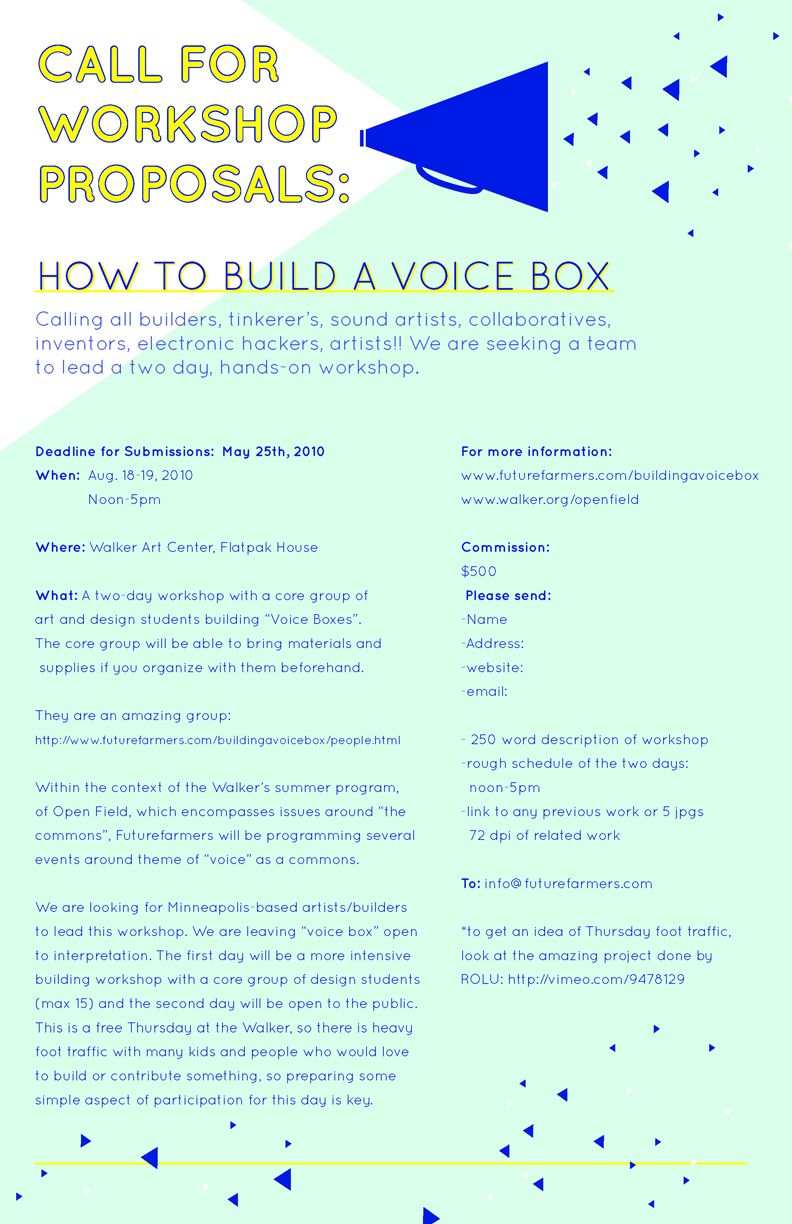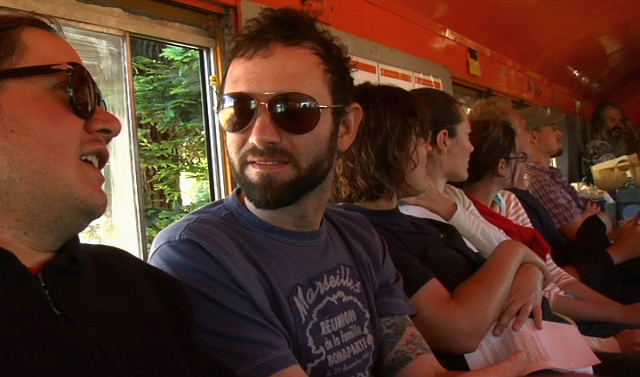Reclaim Market Street! is an exhibition and series of public programs created by the Studio for Urban Projects and hosted by SPUR (the San Francisco Planning + Urban Research Association), in San Francisco, CA.
Studio for Urban Projects is an art and design collaborative that, according to their website, “perceives art as a means of advancing civic engagement and furthering public dialogue.” Together, the Studio’s core members–Alison Sant, Richard Johnson, Marina McDougall, Kirstin Bach and Daya Karam–operate a storefront in the Mission District of San Francisco and have created public art projects for the city of Seattle, and the 2010 01SJ Biennial.
This research-based exhibition largely consists of a curated set of examples of public projects and interventions that have had positive impacts in other cities that is held together by a clever exhibition design consisting largely of cardboard–cardboard seats, walls, signage, kiosks, and even flooring. The meat of the project lies in its public programs of walking tours, guided bike rides, impromptu parks, and outdoor events that challenge the public to participate in redefining what they expect from (and how they interact with) city streets.
Indoors, I found the way the exhibition challenges people to take immediate action most refreshing. Within SPUR are work stations displaying applications where you can immediately apply to “Create a Park,” “Make Your Own Bike Lane” or “Plant the Sidewalk.” Outdoors, their project is about gathering people together to acknowledge history while contributing to aspirational scenarios of the future.
This project is a perfect example of how artists are using their practice to help create solutions to real-world problems. Market Street is the central transit corridor of San Francisco. On one side is Ferry Plaza and the bustling Financial District, on the other side is the colorful Castro District where shops and cafes line the street. In the middle is the Central Market District. Originally a theater district, years of economic decline have left it more known for strip clubs, panhandlers, graffiti, and empty storefronts. The City of San Francisco has launched a revitalization campaign and other organizations such as the San Francisco Arts Commission and Gray Area Foundation for the Arts have been actively working to literally bring art to the street.
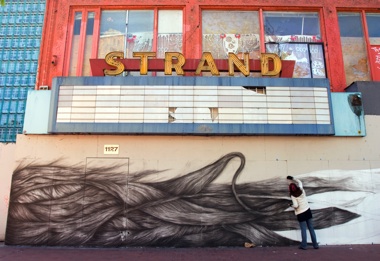
Paz de la Calzada painting Central Market Dreamscape, 2011. Mural, 1127 Market Street, San Francisco. Courtesy of the ARTery Project, San Francisco Arts Commission. Photo: Lydia Gonzales.
Reclaim Market Street! adds to this local dialogue and is about using Market Street as muse in a public conversation around expand the use cases for city streets beyond automobile traffic to include safe and engaging spaces for bikers and pedestrians. Because Central Market Street District is a place people are more likely to pass through quickly, Studio for Urban Projects has created a framework that challenges people to spend time on the street. A particularly interesting program that will take place on October 15th is “Temporary Urban Experiments in Creating New Public Spaces.” Child-friendly urban planning more often than not sequesters children within fenced off playgrounds. But what if play was incorporated back into street life?
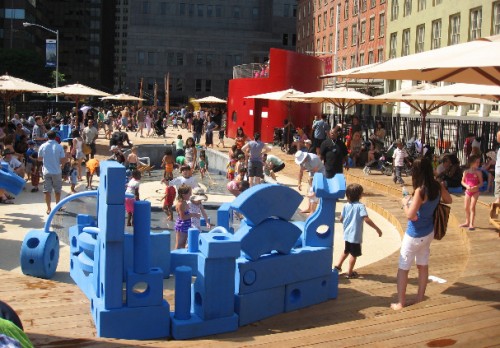
The Imagination Playground installed near South Street Seaport in New York City. Image courtesty of http://www.glenwoodnyc.com/
For this project, they are featuring the Imagination Playground Kit designed by David Rockwell and the Rockwell Group within an urban plaza that is normally dominated by concrete.
With public funds for the arts dwindling, revitalization of cities through the arts and culture is one area that is receiving greater attention in recent times. As an example, the NEA is echoing this call for a revitalization of cities through the arts by recently announcing its inaugural “Our Town” grants that help 51 communities, including San Francisco and San Jose, CA, revitalize their neighborhoods through strategies involving the arts. Creative placemaking is a challenge to reclaim our urban centers, which is precisely what Studio for Urban Projects is doing in focusing their energies toward the Central Market Street District.
Much of what Studio for Urban Projects suggests is common sense. Safe and scenic bike paths through the city, reclamation of under utilized spaces, and a move away from automobile centric civic design. It’s the thoughtfulness of the exhibition design and their collaborative ethos (Reclaim Market Street! also showcases contributions by Futurefarmers, Rebar, and the San Francisco Bike Coalition) that works best in using the arts to promote conversations that have the potential to create lasting change.
So the question is, what urban spaces would you like to reclaim?
